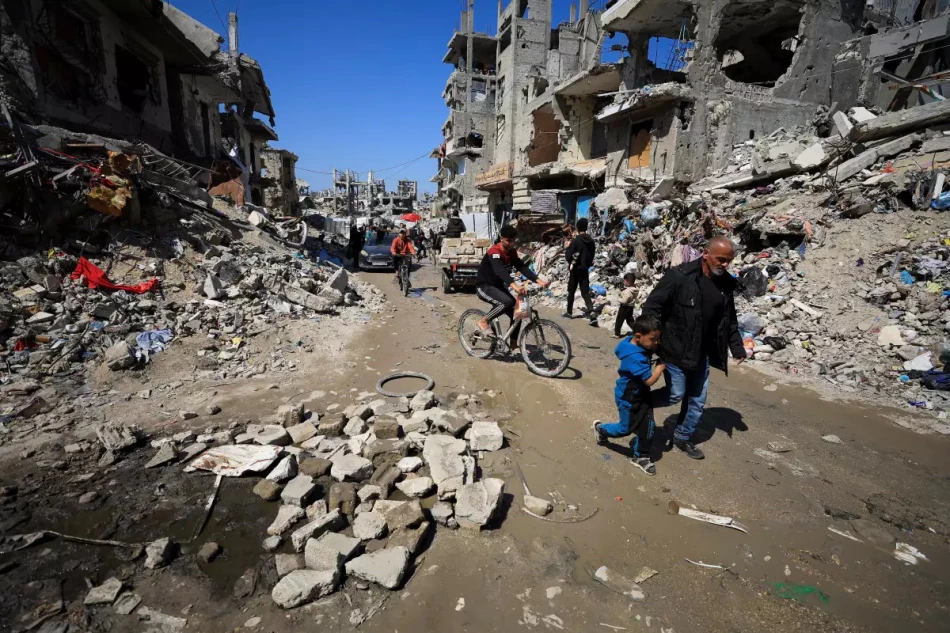
Gaza Occupation Exacts Hefty Economic Toll on Israel
Israel Faces Staggering $33 Billion Price Tag for Full Gaza Control
Israeli military economists have revealed the astronomical financial burden of occupying and controlling Gaza, with estimates reaching $6 billion for military control alone and an additional $27 billion to make the territory habitable. These projections highlight the massive economic reality behind Israel's strategic decisions in Gaza, potentially reshaping the conflict's trajectory based on pure fiscal constraints.
The Economics of Military Occupation
According to Ram Aminach, former financial advisor to the Israeli military and a leading expert in military economics, the initial cost of seizing complete control over all Gaza territories currently outside Israeli influence ranges between 10-20 billion shekels ($2.9-5.8 billion). However, this figure represents only the beginning of what could become one of the most expensive military occupations in modern history.
The financial analysis reveals a stark reality: full territorial control without comprehensive reconstruction, but including responsibility for the civilian population, would require a one-time investment of 100 billion shekels ($29 billion). This includes basic infrastructure like waste removal, emergency housing, water and sewage systems, electricity networks, and healthcare facilities.
Annual Maintenance Costs Dwarf Initial Investment
Perhaps more daunting than the upfront costs are the ongoing expenses. Military economists project annual maintenance costs between 60-130 billion shekels ($17.4-37.6 billion) to sustain full control. This includes partial responsibility for Gaza's educational system, complete food provision for the population, and the continuous rotation of Israeli military units including reserve forces.
The largest component of these recurring costs stems from maintaining a permanent military presence to ensure security and order—a requirement that would fundamentally alter Israel's military budget allocation for decades.
International Isolation Multiplies Financial Burden
Aminach warns that current international pressure on Israel would intensify dramatically under full occupation. "Look at the international pressure Israel faces today, and multiply it by at least five," he stated. This diplomatic isolation carries direct financial consequences, as no international entity would likely contribute to reconstruction costs given Israel's current global standing.
This isolation factor distinguishes Gaza from other post-conflict reconstruction efforts, where international donors typically shoulder significant portions of rebuilding costs. Israel would face the unprecedented situation of funding both military occupation and civilian infrastructure entirely from domestic resources.
Veteran Affairs: The Hidden Long-Term Cost
Beyond immediate military and infrastructure expenses lies a growing financial obligation that rarely features in occupation cost analyses: veteran care. Israel's Rehabilitation and Family Affairs Department, responsible for compensating families of fallen soldiers, medical rehabilitation for the wounded, and lifetime pensions for disabled veterans, currently operates on a budget of approximately 120 billion shekels ($34 billion).
This figure would expand significantly under full Gaza occupation, creating a multi-generational financial commitment that extends far beyond any military campaign's duration. The department's budget represents a cautionary tale about the true long-term costs of military engagement.
Settlement Ambitions Could Double the Price Tag
The most expensive scenario involves the ambitions of Finance Minister Bezalel Smotrich and National Security Minister Itamar Ben-Gvir, who advocate for "complete sovereignty" including the reconstruction of Israeli settlements in Gaza. This vision would add massive costs for civilian housing construction, security provision, and ongoing maintenance—expenses not included in current projections.
Such settlement construction would transform the financial equation entirely, potentially doubling the overall cost while creating permanent security obligations that would persist indefinitely.
Strategic Implications for Regional Stability
These financial projections reveal why military strategy increasingly intersects with economic reality in modern conflicts. The $33 billion total cost represents roughly 10% of Israel's entire GDP, a burden that would require significant domestic budget restructuring and potentially external financing.
The economic analysis suggests that full Gaza occupation may be financially prohibitive regardless of military feasibility, forcing Israeli decision-makers to consider alternative strategies that balance security objectives with fiscal sustainability. This economic constraint could ultimately prove more decisive than military or diplomatic factors in shaping the conflict's resolution.
Most Viewed News

 Sara Khaled
Sara Khaled






